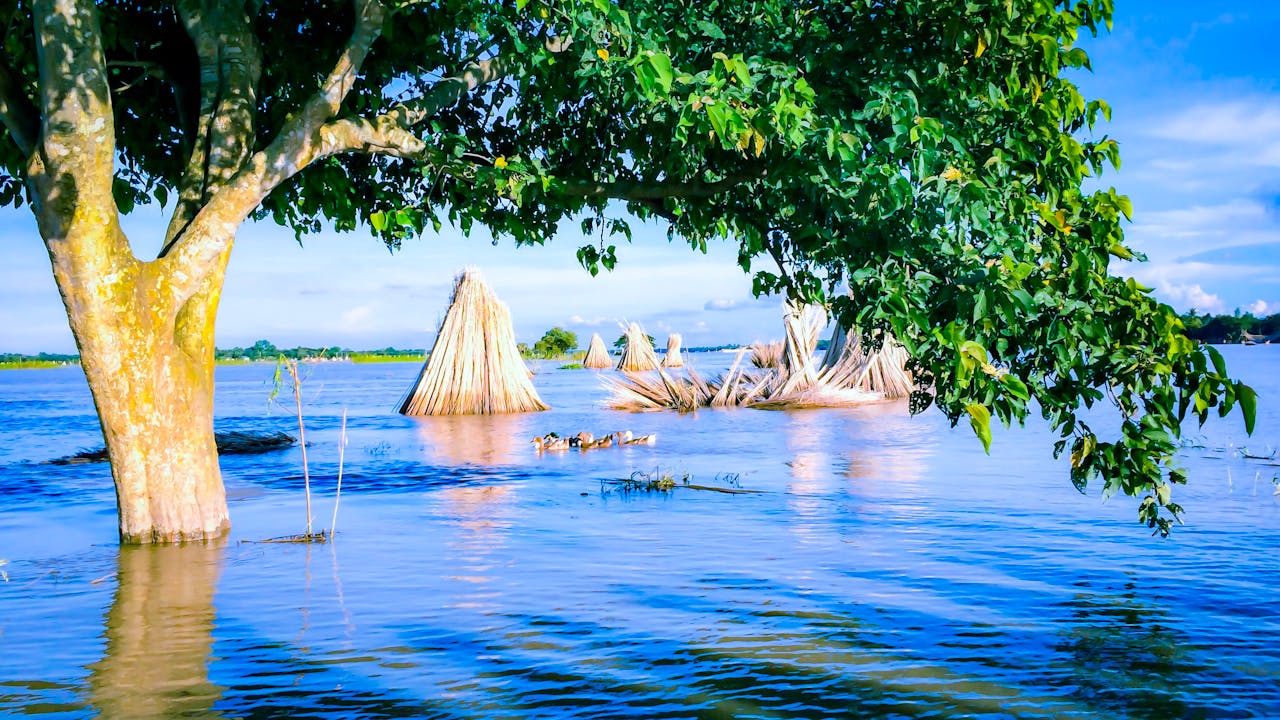which human activity can produce disruption of fish breeding habits, increase in mosquito population, and flood control?
Which human activity can produce disruption of fish breeding habits, increase in mosquito population, and flood control? A: Deforestation and…
Which human activity can produce disruption of fish breeding habits, increase in mosquito population, and flood control?
A: Deforestation and land development are significant human activities that can lead to disruptions in fish breeding habits, increases in mosquito populations, and alterations in flood control measures.
- Disruption of Fish Breeding Habits: Deforestation and land development often involve clearing riparian vegetation and altering natural watercourses. This habitat destruction and fragmentation disrupt fish breeding habitats by reducing shading, altering water temperature, and changing flow dynamics, impacting fish spawning grounds.
- Increase in Mosquito Population: The removal of natural vegetation and alteration of water bodies during land development can create stagnant water bodies and modified drainage patterns, providing ideal breeding grounds for mosquitoes. Increased mosquito populations result from the creation of artificial water bodies, irrigation systems, and altered surface runoff patterns associated with deforestation and land development.
- Impact on Flood Control: Deforestation reduces the natural capacity of forests to absorb rainfall and regulate water flow. Loss of forested areas increases surface runoff and soil erosion, leading to altered drainage patterns and exacerbating flooding events. Additionally, land development often involves the construction of impervious surfaces such as roads and buildings, which further contribute to increased surface runoff and flooding.
In summary, deforestation and land development activities have multifaceted impacts on aquatic ecosystems, affecting fish breeding habits, mosquito populations, and flood control measures.
Related: Revealing Bacterial Vampirism: Deadly Bacteria’s Thirst for Human Blood Join TELEGRAM
Human Activities Impacting Aquatic Ecosystems

Human activities often have significant impacts on aquatic ecosystems, affecting various aspects of aquatic life and ecosystem dynamics. Among these activities, some can lead to disruptions in fish breeding habits, increases in mosquito populations, and alterations in flood control measures.
1. Deforestation and Land Development:
- Disruption of Fish Breeding Habits: Deforestation and land development can lead to habitat destruction and fragmentation, disrupting fish breeding habitats. Clearing of riparian vegetation reduces shading and alters water temperature and flow dynamics, affecting fish spawning grounds.
- Increase in Mosquito Population: The removal of natural vegetation can create stagnant water bodies and altered drainage patterns, providing ideal breeding grounds for mosquitoes. Increased mosquito populations can result in higher incidences of mosquito-borne diseases.
- Impact on Flood Control: Deforestation reduces the natural ability of forests to absorb rainfall and regulate water flow. Loss of forested areas can exacerbate flooding events by increasing surface runoff and soil erosion, impacting flood control measures.
2. Dam Construction and Alteration of Watercourses:
- Disruption of Fish Breeding Habits: Dam construction and alteration of watercourses can obstruct fish migration routes, fragment habitats, and alter natural flow regimes. Changes in water flow patterns can affect fish spawning behaviors and migration patterns, leading to declines in fish populations.
- Increase in Mosquito Population: Stagnant water bodies formed by dam construction and altered watercourses provide breeding sites for mosquitoes. Reservoirs and impoundments can harbor stagnant water, increasing mosquito breeding habitats.
- Impact on Flood Control: Dams and alterations to watercourses can affect flood control by regulating water flow. While dams can help regulate downstream flooding by storing excess water, they can also disrupt natural floodplain dynamics and sediment transport processes.
3. Agricultural Practices and Urbanization:
- Disruption of Fish Breeding Habits: Agricultural runoff containing pollutants such as pesticides and fertilizers can degrade water quality and harm aquatic habitats. Excessive nutrient inputs can lead to algal blooms and oxygen depletion, affecting fish breeding habitats.
- Increase in Mosquito Population: Agricultural practices such as irrigation and water storage can create stagnant water bodies, providing breeding sites for mosquitoes. Urbanization increases impervious surfaces, leading to stormwater runoff and artificial water bodies conducive to mosquito breeding.
- Impact on Flood Control: Agricultural practices and urbanization can alter natural drainage patterns and increase surface runoff, contributing to flooding events. Conversion of natural landscapes to agricultural or urban areas reduces the capacity of ecosystems to absorb and retain water, affecting flood control measures.
Human activities such as deforestation, dam construction, agricultural practices, and urbanization can have multifaceted impacts on aquatic ecosystems. Understanding these impacts is crucial for implementing sustainable management practices that minimize disruptions to fish breeding habits, mitigate increases in mosquito populations, and optimize flood control measures.
FAQ: Understanding the Impact of Deforestation and Land Development
Q: What human activity can lead to disruptions in fish breeding habits, increased mosquito populations, and alterations in flood control measures?
A: Deforestation and land development are significant human activities that can result in disruptions in fish breeding habits, increased mosquito populations, and alterations in flood control measures.
Q: How does deforestation and land development disrupt fish breeding habits?
A: Deforestation and land development involve clearing riparian vegetation and altering natural watercourses, which can disrupt fish breeding habitats by reducing shading, altering water temperature, and changing flow dynamics, impacting fish spawning grounds.
Q: What contributes to the increase in mosquito populations associated with deforestation and land development?
A: The removal of natural vegetation and alteration of water bodies during deforestation and land development can create stagnant water bodies and modified drainage patterns, providing ideal breeding grounds for mosquitoes. Increased mosquito populations result from the creation of artificial water bodies, irrigation systems, and altered surface runoff patterns associated with these activities.
Q: How do deforestation and land development affect flood control measures?
A: Deforestation reduces the natural capacity of forests to absorb rainfall and regulate water flow. Loss of forested areas increases surface runoff and soil erosion, leading to altered drainage patterns and exacerbating flooding events. Additionally, land development often involves the construction of impervious surfaces such as roads and buildings, which further contribute to increased surface runoff and flooding.
